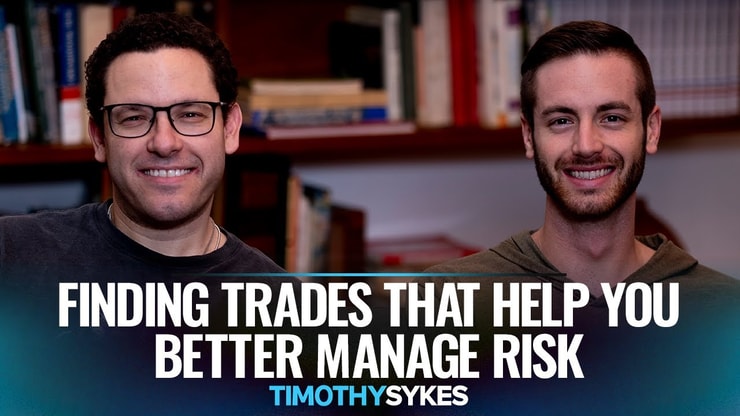Credit spreads options are strategies that option traders use to minimize risk. It involves selling and buying options with the same expiration date but different strike prices. The multiple positions contribute to a higher level of perceived security.
Table of Contents
- 1 What Are Credit Spreads Options?
- 2 Types of Credit Spreads
- 3 Understanding the Credit Spread Strategy with Examples
- 4 How Credit Put Spreads Work
- 5 Credit Spread Market Outlook and Setup
- 6 Advantages and Disadvantages of Credit Spreads
- 7 Key Takeaways
- 8 Frequently Asked Questions (FAQs)
- 8.1 What is the Difference Between a Short Put and a Bull Put Spread?
- 8.2 What Is the Max Loss for a Bull Put Spread?
- 8.3 How to Trade Credit Spreads?
- 8.4 How Do Clients Get Started With Credit Spreads Options, and What Information, Like Name and Address, Is Required?
- 8.5 What Kinds of Trades Are Involved in Credit Spreads Options, and How Can Clients Understand Them?
- 8.6 What Services Are Available for Clients Interested in Credit Spreads Options, and What Are the Primary Purposes of These Services?
What Are Credit Spreads Options?

Credit spreads options are not just products on a broker’s page. They’re a strategy embraced by traders, investors, bulls, and bears in markets like stocks, commodities, and cryptocurrencies.
Imagine a frame where you can capture profits and limit losses through the right order, position, and knowledge of instruments. The pressure to perform is tempered with reliability, and the chart patterns are your allies.
They’re the best advice a company or trader can offer you – not investment advice but trading strategies sculpted through experience and precision.
If you’re truly interested in trading options … there are some things you need to know to navigate this market with a degree of safety.
It’s dangerous to wander around this niche without the correct awareness.
Do yourself a favor and prepare accordingly.
I don’t trade options — I leave it to pros like tech entrepreneur and trader Ben Sturgill. His smart-money webinars are the product of more than 2 decades of experience in the market and a unique technology, and they’re well worth checking out.
Check out the webinar here to see why Ben’s smart-money scanner has been going haywire lately!
Definition of Credit Spreads
Credit spreads are a type of options trading strategy.
In reality, there are a few different strategies that options traders need to be aware of.
I cover everything in the video below …
The focus here is not the individual stocks or forex markets, but patterns in price action, trend directions, and signals in the market.
Understanding the high and low, open and close, the body, and shadows of candlestick patterns will provide insights into credit spreads.
It’s not about investing in an asset; it’s about trading a strategy.
How Credit Spreads Are Created
You create credit spreads by selling and buying options simultaneously.
Imagine a candlestick chart with a bullish engulfing pattern. That’s an indication of an upward trend.
In such a scenario, a bullish credit spread can be applied. The creation of credit spreads is like reading the market’s candlestick patterns, understanding the signals, and applying the right strategy.
Types of Credit Spreads
The types of credit spreads are like the different languages of trading – English, Japanese, bullish, or bearish.
It’s a diversified range, each with its unique illustration, cases, and strategies. From utilizing charts, frames, averages, and trading tools, each type offers its way of interpreting information, news, and market dynamics.
The currency may change, be it USD or others, but the core remains the same – a calculated approach where definitions, content, and the essence of trading speak louder than mere numbers.
More Breaking News
- IonQ’s Quantum Leap: Can Recent Innovations Propel Its Stock to New Heights?
- Joby Aviation: Is It Flying High or About to Land?
- Growth or Bubble? Analyzing the Rapid Movement in Intuitive Machines’ Stock
Bullish Credit Spread
A bullish credit spread takes advantage of upward trends. Picture a chart with engulfing candles heading upwards.
You apply this spread when you think the market or stock is going up. The engulfing candle pattern, bullish in nature, serves as a signal here.
It’s about capturing the positive price action and following the trend.
In the world of trading, not all bullish trends are as they seem. Sometimes, what appears to be an upward trend can turn out to be a bull trap, a false signal indicating that a declining trend in a stock or index has reversed and is heading upward when, in fact, the security will continue to decline.
Understanding these nuances is crucial to successful trading. To learn more about bull traps and how to avoid them, check out this insightful article.
Bearish Credit Spread
Bearish credit spread is the opposite, like a bearish engulfing pattern on a candlestick chart.
When the market is heading downward, this is the spread to apply.
Here, the market trends, price action, and bearish candlestick patterns help in determining the direction and executing the strategy.
Understanding the Credit Spread Strategy with Examples

Welcome to the world of credit spread strategy, where examples are not just numbers and figures on a blog page but lessons in market dynamics, calendar events, and volume shifts.
The strategy is a dance between position, order, profits, losses, gain, amount, and a relentless pursuit of reliability.
Whether it’s the pressure of a downtrend or the allure of an uptrend, the best way to comprehend it is through the lens of candlesticks, chart patterns, and a well-defined trading strategy.
I know this is a lot of information for some people. Don’t let any of the market jargon deter you. There are REAL opportunities in this market.
If you don’t believe me …
Take it from this professional options trader.
Now let’s dive deeper into the credit spread strategy.
Reducing Risk with a Credit Spread Options Strategy
Using credit spread options is all about risk management.
Whether you are in the forex trading world or dealing with stocks or commodities, understanding the trend reversals, price levels, and signals from candlestick patterns ensures risk control.
The body, highs, and lows of the candles, along with other technical analysis tools, help in reducing risks.
How Credit Put Spreads Work

Credit put spreads work like a well-oiled machine, guided by trading tools and driven by traders who know their game.
It’s not a random chase of profits and losses but a calculated journey where every gain, every amount matters.
The reliability of the strategy lies in understanding the market, reading the charts, and working with the frames of possibilities. The instrument might change, but the principles remain the same.
It’s about understanding the bigger picture and adapting to the ever-changing market landscape.
Credit Put Spread Example Scenarios
Here’s how credit put spreads operate: Think of bearish trends in the market.
You see bearish engulfing candle patterns and decide to act. You sell a put option at one strike price and buy another at a lower price.
The aim? To profit from the difference between the options. The space between the top and bottom positions on a chart. It’s about understanding the bearish trends and market sentiment.
Credit Call Spread Example Scenarios
Credit call spreads are like the morning star in a dark sky, signaling a new dawn or an upward trend in this context.
You sell a call option and buy another with a higher strike price. Analyzing the bullish engulfing patterns, trend directions, and other candlestick formations, you make your move.
The strategy is the same but applied in a different context.
Credit Spread Market Outlook and Setup

Peek into the credit spread market outlook, and you’ll find a world of candlesticks, trends, continuations, and endless opportunities. Whether you’re dealing with stocks, commodities, or cryptocurrencies, every broker, company, and trader has something to offer.
The setup isn’t about shortcuts but aligning your trading strategies with your vision, your tools, and your interpretation of charts, averages, and patterns.
It’s a well-framed approach where every piece of information, every news update, and every volume shift has its purpose.
Entering and Exiting a Bull Put Credit Spread
The right entry and exit are essential.
It all comes down to the risk/reward ratio.
To control your risk level, watch my video below …
From choosing the right asset to understanding the levels of support and resistance, it’s about analyzing the market conditions, using indicators like engulfing candles and trend reversals.
Your trading account depends on these critical decisions, like setting the right stop loss or recognizing the strength of the trend.
There are risks involved with this strategy. Stop losses help us manage the risk.
To give you an idea …
A 2019 study called “Day Trading for a Living?” looked at the success rates of Brazilian traders over a 2-year window, and found that 97% of traders with more than 300 days of active trading lost money. Only 1.1% earned more than the Brazilian minimum wage — that’s only $16 per day!
Day trading is a skill that requires knowledge, strategy, and a deep understanding of market trends. It’s not just about making quick decisions; it’s about making the right decisions at the right time.
If you’re considering day trading as a full-time profession, it’s essential to equip yourself with the right tools and knowledge. Here’s a comprehensive guide on how to day trade for a living, providing you with valuable insights and strategies to help you succeed in this field.
Time Decay and Implied Volatility Impact on a Credit Spread
Time decay and implied volatility, crucial elements in options trading, work hand in hand with candlestick patterns and market trends.
A bearish engulfing pattern may signal a trend reversal, just as time decay may reduce the value of an option. Understanding these dynamics enhances your trading decisions.
Adjusting and Hedging a Credit Spread
The market is a dynamic place. A sudden bullish engulfing pattern may change everything.
Adjusting and hedging a credit spread is about recognizing these changes. Monitoring the candles, trends, and market conditions, and adapting accordingly is a must. It’s a continuous process of learning, analyzing, and responding.
Day trading is not just about understanding market trends and making strategic moves.
It also involves being aware of the tax implications of your trading activities. As a trader, you need to be prepared for the tax season and understand how your profits from trading are taxed.
This can be a complex area, and it’s important to get it right to avoid any potential issues with the tax authorities. To help you navigate the world of day trading taxes, here’s an informative article that breaks it down for you.
Advantages and Disadvantages of Credit Spreads

Credit spreads come with their unique set of advantages and disadvantages, much like any other trading strategy.
The advantage lies in your grasp of the candlesticks, trends, price action, and range. It’s about leveraging the support level, interpreting the movements of bulls and bears, and utilizing the right trading tools.
The disadvantages? They lie in misreading the signals, overlooking the market nuances, or failing to adapt to the dynamic landscapes of stocks, cryptocurrencies, or other instruments.
It’s a journey, not a destination, and the right balance between profits, losses, gain, and reliability can make all the difference.
Advantages of Credit Spreads
The advantages of credit spreads are numerous.
From offering flexibility to catering to different market conditions and trends, the use of patterns like engulfing candles and trend reversals makes it a dynamic strategy.
It’s about trading patterns, understanding signals, and applying them in the right context.
Don’t say ‘thanks’ just yet, there are important disadvantages you need to know …
Disadvantages of Credit Spreads
Credit spreads are not without pitfalls.
The complexity, and requirement for constant analysis of candlestick patterns, trend directions, and market signals makes it challenging for beginners.
Like a sudden bearish engulfing pattern, an unexpected market move can turn things around.
Key Takeaways

Credit spreads are more than a trading strategy; they’re a way of understanding and interpreting the market.
Whether bullish or bearish, the underlying principles remain the same: analyze the trends, read the candlestick patterns, and act accordingly.
From understanding the highs and lows to the intricate details of engulfing candles, credit spreads are a valuable tool in a trader’s arsenal.
Trading isn’t rocket science. It’s a skill you build and work on like any other. Trading has changed my life, and I think this way of life should be open to more people…
I’ve built my Trading Challenge to pass on the things I had to learn for myself. It’s the kind of community that I wish I had when I was starting out.
We don’t accept everyone. If you’re up for the challenge — I want to hear from you.
Apply to the Trading Challenge here.
And if you’re into options, you’ll want to check out Ben Sturgill’s smart-money webinars — they’ve been killing the market lately!
Trading is a battlefield. The more knowledge you have, the better prepared you’ll be.
How long have you been trading options? What kinds of patterns do you use? Let me know in the comments — I love hearing from my readers!
Frequently Asked Questions (FAQs)
What is the Difference Between a Short Put and a Bull Put Spread?
The difference lies in strategy and risk management.
Short puts involve selling a put option outright, while a bull put spread involves selling and buying puts simultaneously.
The candlestick patterns, trend directions, and market conditions help in deciding the strategy.
What Is the Max Loss for a Bull Put Spread?
The maximum loss for a bull put spread is limited to the difference between the strike prices minus the net credit received.
Analyzing the candlestick patterns, understanding the price action, and using tools like stop loss can help in managing this loss.
How to Trade Credit Spreads?
Trading credit spreads is about understanding the market, reading the signals from candlestick patterns like engulfing candles, and applying the right strategies.
From bullish to bearish trends, the use of tools like trend reversal indicators, support and resistance levels, and candlestick formations such as an engulfing candlestick pattern will play a vital role.
It’s a strategic play where every candle, every move, and every trend has its significance.
How Do Clients Get Started With Credit Spreads Options, and What Information, Like Name and Address, Is Required?
Clients looking to trade credit spreads options must first register with a brokerage service, providing personal information such as their name and address.
This information is essential for identity verification and regulatory compliance.
What Kinds of Trades Are Involved in Credit Spreads Options, and How Can Clients Understand Them?
Trades in credit spreads options involve buying and selling options simultaneously, with the same expiration date but different strike prices.
Clients can consult with financial experts or utilize educational services to grasp the underlying principles and strategies of these trades.
What Services Are Available for Clients Interested in Credit Spreads Options, and What Are the Primary Purposes of These Services?
Services available for clients interested in credit spreads options include trading platforms, educational resources, personalized consulting, and risk management tools.
The primary purposes of these services are to assist clients in understanding, executing, and profiting from credit spreads options while minimizing potential risks. They act as guides for clients that are new to the market.




Leave a reply